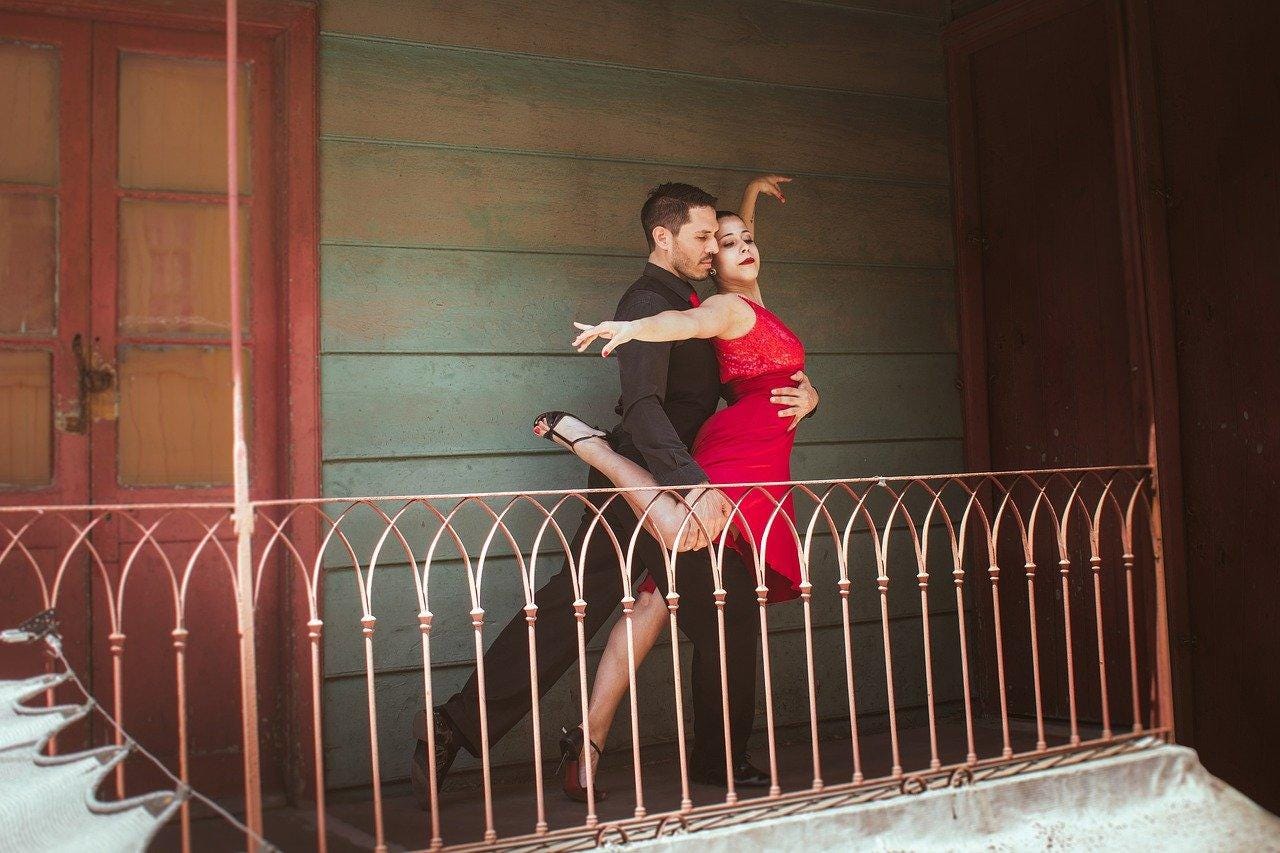Learn the Tango in VR? Maybe, but should you?


When I lived in South America I was subjected to no end of humiliations on the dance floor. Salsa in Medellin, Marinera in Peru. I'm 6'4" and literally didn't fit on one dance floor, which required I squatted and craned my neck.
But of all the valiant attempts, Tango in Argentina takes the cake. It's a dance that demands deep understanding and intimacy with both tradition and your partner. It also demands lots of practice, and that's why, as long as the dance has existed, there's been a robust ecosystem of dance instructors willing, for a price, to train acolytes in the rhythmic arts.
As virtual and augmented reality technologies become more pervasive and developed, instruction has been a major driver of market adoption. Workplace instruction in many sectors, including logistics and heavy industries, are more and more offered via virtual reality, which has significant advantages in tracking student progression and keeping new hires safe.
But can something so physical and nuanced as dance be taught via virtual reality? Is it even possible? It's an interesting use case at the intersection of tradition and technology, and during the pandemic, which has been a lodestone for businesses offering in-person instruction, the question has never been more relevant. For answers I reached out to Anita Flejter Managing Director, Co-owner & Co-Founder of Massachusetts-based Ultimate Tango.
"A fascinating purpose for VR would be to create a virtual partner to dance or to practice with. If a scarcity of leaders or followers arises, either in a class or in the Milonga, we can provide the glasses, and off we go," posits Flejter.
But limitations exist for a training module specific to a physical partner activity like Tango. "In the world of human experience, we do not operate [strictly] in 3D immersion. That's just the start. We operate based on five senses – sight, sound, taste, smell, touch. VR fulfills only the first two. For dancers, touch is the crucially important one. Tango has evolved over the years due to research and changing teaching styles, but the primary characteristic remains constant -- touch."
The limitation of a technology aimed primarily at two senses is apparent in an activity like dance, which relies on touch cues. Haptic feedback is increasingly common in VR experiences, which may go some of the way toward reconciling a virtual experience with the real thing, but most haptic development is focused on the hands to provide tactile feedback during virtual manipulation of objects. Full body haptic feedback suits do exist, such as those from developers TeslaSuit and bHaptics, and by all accounts I've heard the experience is incredibly realistic.
But Flejter points out that a partner is more than an physically reacting automaton.
"Even enriched by the full five senses, VR would be missing the essentials; age, experience, your past, dreams, goals, and desires. How you touch can define who you are. Are you a person who always keeps distance? If so, is that explained by the culture you grew up in, the way your parents or caregivers brought you up, the religion you practice, your social status, the relationship with the person you are next to, the day of the week, time of the day, the context of the situation, your profession, and much more."
This is a philosophical take, sure, but it points to something fundamentally true about synthetic experiences: The bar is very high for any machine -- virtual or physical -- to react to the myriad contextual inputs that a normal human would as a matter of course. The anxiety a partner brings to a situation, for example, gives it texture. The way someone reacts unexpectedly in conversation adds value to the interaction. Those are difficult things to program a machine to pull off.
"Most importantly, if you ask a social Tango dancer what the dance is about, the embrace will be the first thing they mention, followed by 'walking together', being together, feeling each other. It is for moments like these that you are getting ready for all your life."
During the pandemic, Flejter and many other dance instructors have been embracing virtual lessons as a matter of survival. The lessons offer many benefits, but Flejter is also honest about the difficulties of teaching dance via video conference. For Tango you need a designated partner, for example, so no solo individuals are allowed in a virtual class. She's also found that some feel their personal living space is exposed. With virtual classes, students lose the experience of changing partners, which can lead to an inability to adjust to various partners as required in a typical 'in-person' experience later on. Perhaps the biggest drawback is the lack of a deep personal bond that can develop between students.
Virtual reality training is certainly a valuable tool in a growing number of industries. But somehow it's also reassuring to know that there are still limitations to what a virtual experience can offer. Virtual reality is safe, but life rewards taking risks. When the pandemic is over and travel is once again less daunting, I look forward to going back to Argentina and making a proper fool of myself on the dance floor. Those are the experiences that no headset can provide.